Why does Bitcoin only rise when the US government opens its doors?
- 核心观点:政府停摆引发流动性危机。
- 关键要素:
- TGA账户抽走7000亿美元流动性。
- 隔夜利率飙升,SRF使用量创新高。
- 商业地产与汽车贷款违约率激增。
- 市场影响:全球资产普跌,金融系统承压。
- 时效性标注:短期影响。
The US government shutdown has officially entered its record 36th day.
Global financial markets have plunged over the past two days. The Nasdaq, Bitcoin, tech stocks, the Nikkei index, and even safe-haven assets like US Treasury bonds and gold have not been spared.
Panic is spreading in the markets, while politicians in Washington are still arguing over the budget. Is there a link between the US government shutdown and the global financial market downturn? The answer is emerging.
This is not a typical market correction, but a liquidity crisis triggered by the government shutdown. With fiscal spending frozen, hundreds of billions of dollars are locked in Treasury accounts and unable to flow into the market, cutting off the lifeblood of the financial system.

The real culprit behind the decline: the Ministry of Finance's "black hole"
The U.S. Treasury General Account (TGA) can be understood as a central checking account opened by the U.S. government with the Federal Reserve. All federal revenue, whether from taxes or proceeds from the issuance of Treasury bonds, is deposited into this account.
All government spending, from paying civil servants' salaries to defense spending, is allocated from this account.
Under normal circumstances, the TGA acts as a transit point for funds, maintaining a dynamic balance. The Treasury collects the money and then quickly spends it, with the funds flowing into the private financial system, becoming bank reserves, and providing liquidity to the market.
The government shutdown broke this cycle. The Treasury was still collecting money through taxes and bond issuance, and the TGA balance continued to grow. But because Congress did not approve a budget and most government departments were shut down, the Treasury was unable to spend as planned. The TGA became a financial black hole that only took in money and never gave out.
Since the shutdown began on October 10, 2025, the balance of TGA has ballooned from approximately $800 billion to over $1 trillion by October 30. In just 20 days, more than $200 billion was withdrawn from the market and locked in the Federal Reserve's vault.
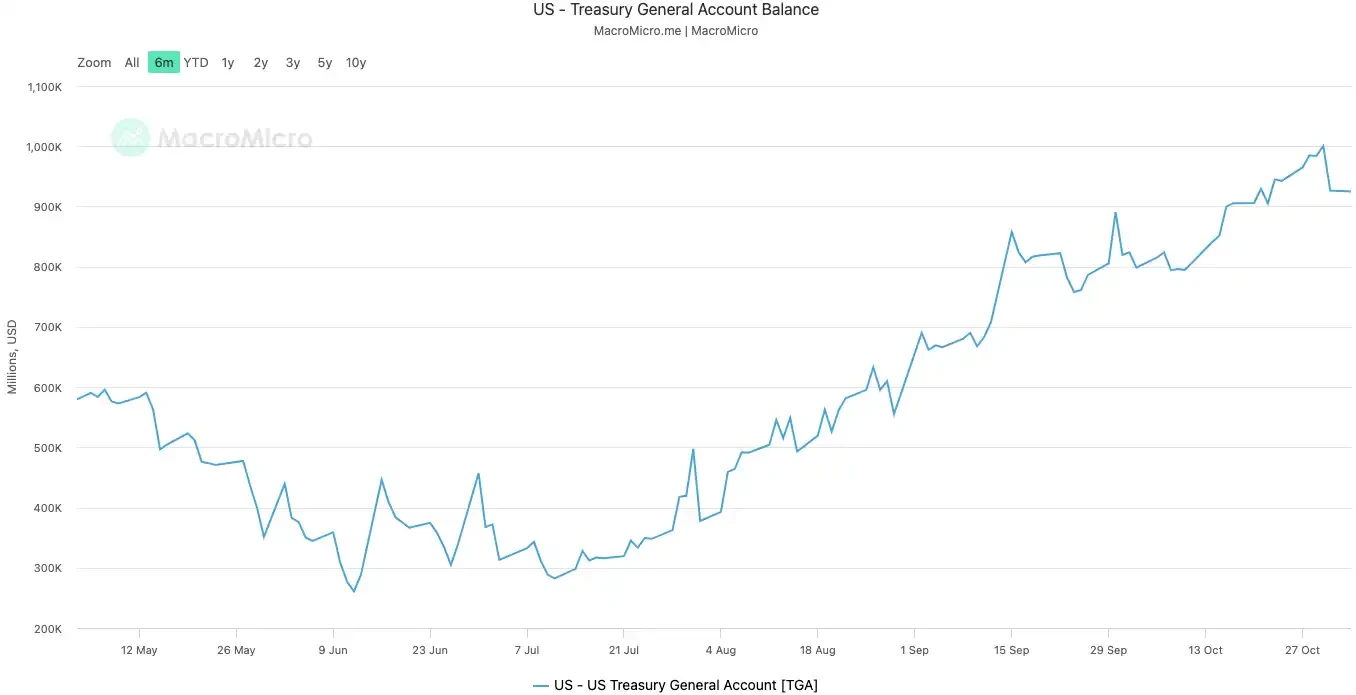
US government TGA balance | Source: MicroMacro
Some analysts point out that the government shutdown withdrew nearly $700 billion in liquidity from the market within a month. This effect is comparable to the Federal Reserve raising interest rates multiple times or accelerating quantitative tightening.
When TGA (Treasury General Agreement) siphons a large amount of reserves from the banking system, banks’ ability and willingness to lend both decline significantly, and the cost of funds in the market soars accordingly.
Those assets most sensitive to liquidity are always the first to feel the chill. The cryptocurrency market plummeted on October 11th, the second day of the shutdown, with liquidations approaching $20 billion. Tech stocks also teetered this week, with the Nasdaq falling 1.7% on Tuesday, and Meta and Microsoft experiencing sharp declines after their earnings reports.
The decline in global financial markets is the most direct manifestation of this hidden tightening.
The system is overheating.
The TGA is the "cause" of the liquidity crisis, while the soaring overnight lending rate is the most direct symptom of the financial system "fever".
The overnight lending market is where banks lend and borrow short-term funds to each other. It is the capillary of the entire financial system, and its interest rate is the most accurate indicator of the tightness of the money supply among banks. When liquidity is abundant, it is easy for banks to borrow money, and interest rates are stable. But when liquidity is dried up, banks begin to lack money and are willing to pay higher prices to borrow money overnight.
Two key indicators clearly show how severe this high fever is:
The first indicator is SOFR (Secure Overnight Financing Rate). On October 31, SOFR surged to 4.22%, marking its largest daily increase in a year.
This not only exceeds the Federal Reserve's 4.00% ceiling on the federal funds rate, but also surpasses the Fed's effective funds rate by 32 basis points, reaching its highest point since the market crisis in March 2020. Actual borrowing costs in the interbank market have spiraled out of control, far exceeding central bank policy rates.
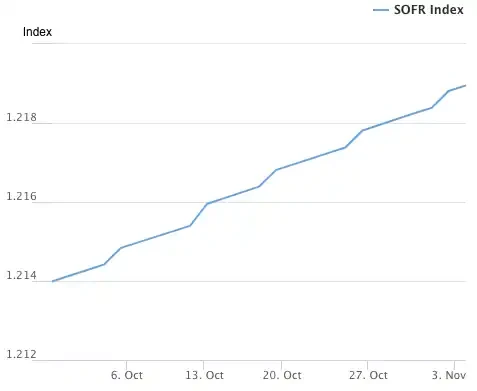
Secured Overnight Funding Rate (SOFR) Index | Source: Federal Reserve Bank of New York
The second, even more striking indicator is the usage of the Federal Reserve's SRF (Standing Repurchase Facility). The SRF is an emergency liquidity tool provided by the Federal Reserve to banks, allowing them to pledge high-grade bonds to the Fed in exchange for cash when they cannot borrow money in the market.
On October 31, SRF usage surged to $50.35 billion, marking the highest level since the pandemic crisis began in March 2020. The banking system has fallen into a severe dollar shortage, forcing it to call the Federal Reserve for help as a last resort.
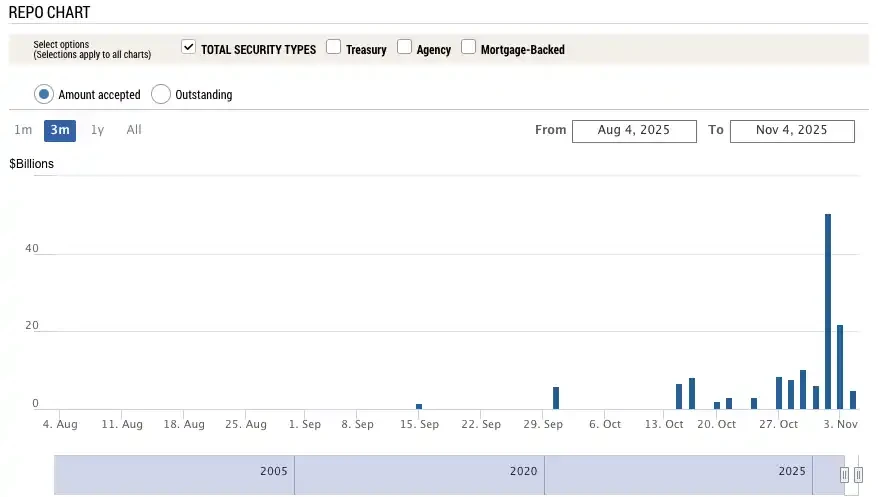
Standing Repurchase Facility (SRF) Usage | Source: Federal Reserve Bank of New York
The overheated financial system is transmitting pressure to the weak links of the real economy, triggering long-hidden debt bombs. The two most dangerous areas at present are commercial real estate and auto loans.
According to data from research firm Trepp, the default rate for US office building CMBS (Commercial Mortgage-Backed Securities) products will reach 11.8% in October 2025, not only setting a new historical high but also surpassing the peak of 10.3% during the 2008 financial crisis. In just three years, this figure has surged nearly tenfold from 1.8%.
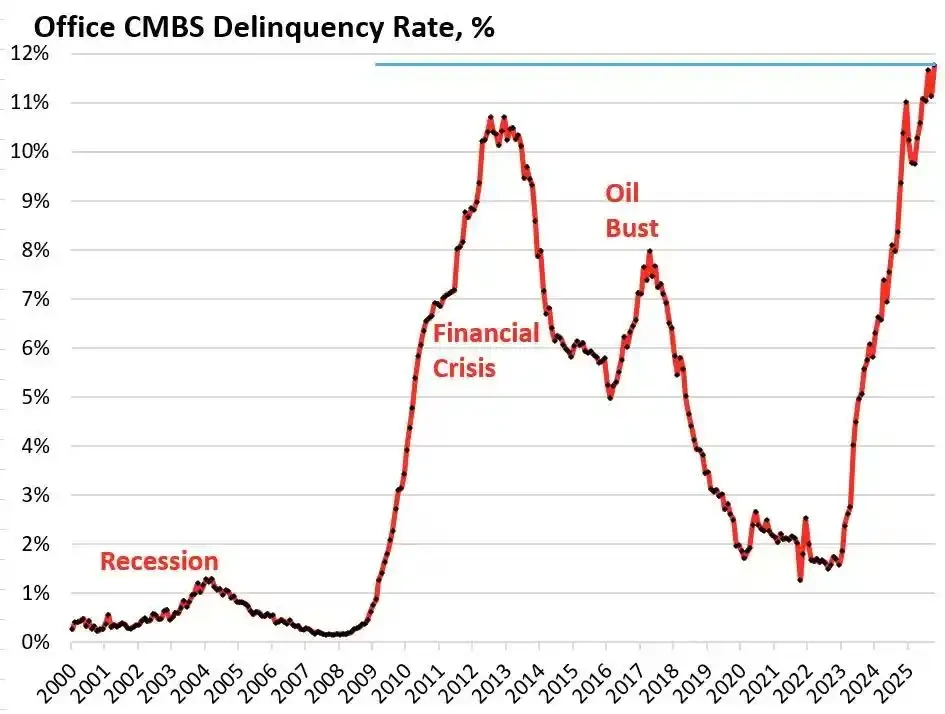
Default rates of US office building CMBS (Commercial Mortgage-Backed Securities) | Source: Wolf Street
Bravern Office Commons in Bellevue, Washington, is a prime example. This office building, once wholly leased by Microsoft, was valued at $605 million in 2020. Now, with Microsoft's departure, its valuation has plummeted 56% to $268 million, and it has entered default proceedings.
This commercial real estate crisis, the worst since 2008, is spreading systemic risk throughout the financial system through regional banks, real estate investment trusts (REITs), and pension funds.
On the consumer side, alarm bells have also been sounded for auto loans. New car prices have soared to an average of over $50,000, and subprime borrowers face loan interest rates as high as 18-20%, signaling a wave of defaults. As of September 2025, the default rate for subprime auto loans was approaching 10%, and the overall auto loan delinquency rate had increased by more than 50% over the past 15 years.
Under the pressure of high interest rates and high inflation, the financial situation of lower-income consumers in the United States is rapidly deteriorating.
From the implicit tightening of TGA (Total General Rates) to the systemic overheating of overnight interest rates, and then to the debt defaults in commercial real estate and auto loans, a clear chain of crisis transmission has emerged. The fuse unexpectedly ignited by the political gridlock in Washington is exploding the structural weaknesses that have long existed within the US economy.
What do traders think about the market outlook?
Faced with this crisis, the market is deeply divided. Traders stand at a crossroads, fiercely debating the future direction.
Pessimists, represented by Mott Capital Management, believe the market is facing a liquidity shock comparable to that of late 2018. Bank reserves have fallen to dangerous levels, remarkably similar to the market turmoil triggered by the Fed's balance sheet reduction in 2018. As long as the government shutdown continues and the Treasury General Agreement (TGA) continues to drain liquidity, the market pain will not end. The only hope lies in the Treasury's Quarterly Refinancing Announcement (QRA) on November 2nd. If the Treasury decides to lower the TGA target balance, it could release over $150 billion in liquidity into the market. However, if the Treasury maintains or even raises the target, the market winter will become even longer.
Raoul Pal, a prominent macro analyst and representative of the optimists, has proposed a compelling "painful window" theory. He acknowledges that the market is currently in a painful window of liquidity tightening, but he firmly believes that a liquidity flood will follow. Over the next 12 months, the US government will need to roll over up to $10 trillion in debt, forcing it to ensure market stability and liquidity.
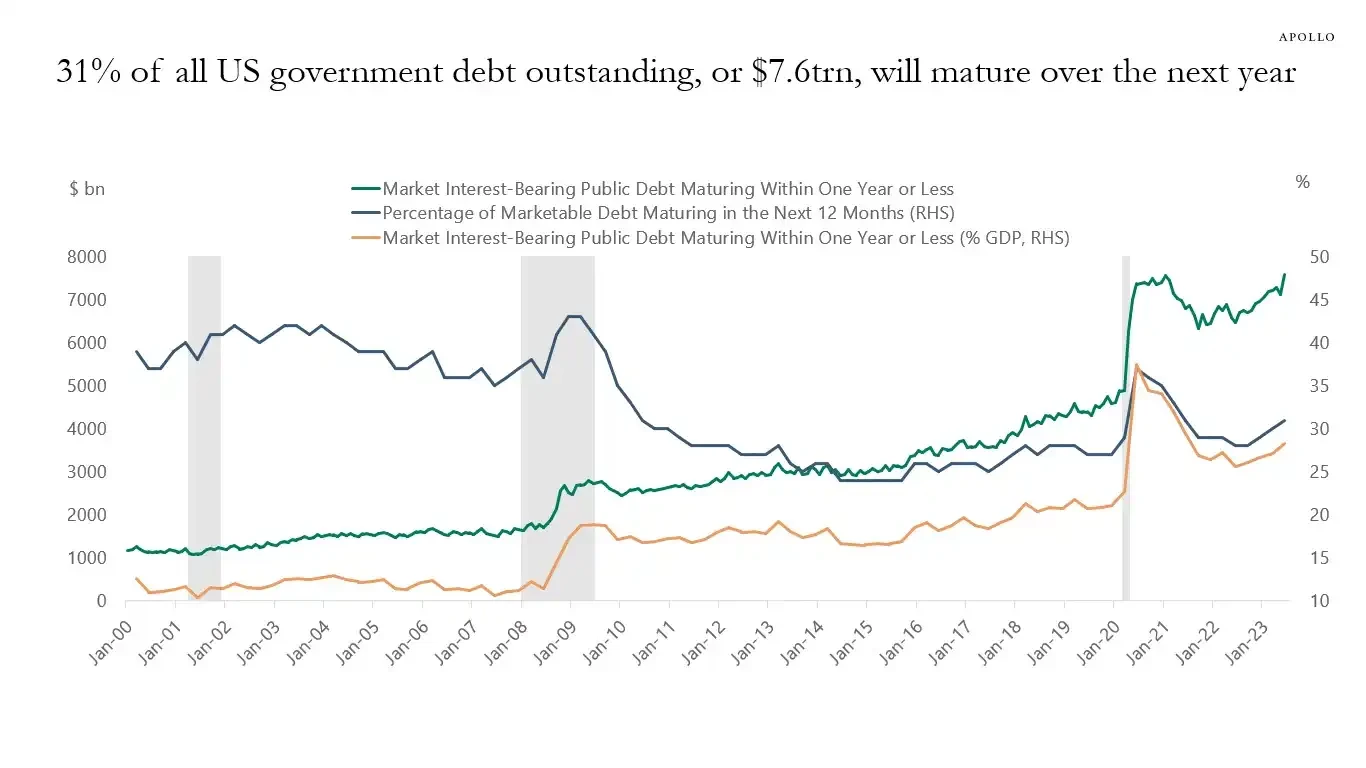
31% of the US government debt (approximately $7 trillion) will mature within the next year, and with new debt issuance, the total could reach $10 trillion. | Source: Apollo Academy
Once the government shutdown ends, hundreds of billions of dollars in pent-up fiscal spending will flood the market, and the Federal Reserve's quantitative tightening (QT) will technically end, or may even reverse.
To prepare for the 2026 midterm elections, the US government will spare no effort to stimulate the economy, including cutting interest rates, relaxing bank regulations, and passing cryptocurrency legislation. With China and Japan also expected to continue expanding liquidity, the world will see a new round of quantitative easing. The current pullback is merely a market correction within a bull market; the real strategy should be to buy on dips.
Major institutions such as Goldman Sachs and Citigroup hold a relatively neutral view. They generally expect the government shutdown to end within the next one to two weeks. Once the deadlock is broken, the huge amount of cash locked in the TGA will be quickly released, thereby easing market liquidity pressures. However, the long-term direction still depends on the Treasury's QRA announcement and the Federal Reserve's subsequent policies.
History seems to repeat itself. Whether it was the balance sheet reduction panic of 2018 or the repo crisis of September 2019, both ultimately ended with the Federal Reserve surrendering and injecting liquidity back into the system. This time, facing the dual pressures of political gridlock and economic risks, policymakers seem to have once again reached a familiar crossroads.
In the short term, the fate of the market hangs in the balance on the decisions of Washington politicians. But in the long term, the global economy seems to be trapped in a vicious cycle of debt, quantitative easing, and bubbles from which it cannot escape.
This crisis, unexpectedly triggered by the government shutdown, may just be the prelude to the next, even larger wave of liquidity.



